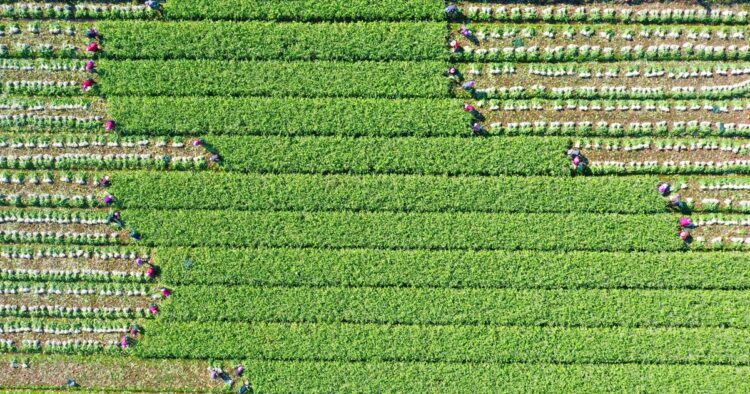China has achieved a record-breaking grain output this year, marking the 20th consecutive year of bumper harvests, with an annual grain production exceeding 1.39 trillion kilograms, according to the People’s Daily. However, despite this seemingly positive news, experts warn that the country’s food self-sufficiency rate is decreasing as it heavily depends on imports.
The Ministry of Agriculture and Rural Affairs has set a goal for 2024 to stabilize the production of essential grains like rice, wheat, corn, and soybeans to ensure an output above 1.3 trillion kilograms. Yet, official data reveals that self-sufficiency in “food rations” (mainly rice and wheat) does not equate to having enough domestically produced food for the entire population.
A report by the Institute of Rural Development of the Chinese Academy of Social Sciences suggests that by 2025, China may face a grain gap of about 130 million tons, representing around 10 percent of the projected 2024 output. Genevieve Donnellon-May from the Asia Society Policy Institute notes that Beijing is concerned about potential weaponization of food supplies and imports affecting national security.
Last year, China’s grain imports reached 140 million tons, surpassing its total grain output of 680 million tons. Reports indicate that over the past 20 years, China’s food security level has dropped from 93.6 percent in 2000 to 65.8 percent, with over one-third of its food now relying on imports.
A study by the Centre for Economic Policy Research reveals that China’s demand for food imports has led to a significant increase in global farmland, contributing to one-third to two-thirds of global deforestation. Concurrently, changes in land use, rural urbanization, and dietary patterns pose “more severe challenges” to China’s food security in the next decade, according to a report by Renmin University of China.
Karen Mancl, a professor at Ohio State University, attributes China’s declining food self-sufficiency to the conversion of agricultural land for non-farm uses, such as urban development and factories. Chinese agricultural experts note a decline in soybean self-sufficiency from 62.4 percent in 2000 to 16.6 percent in 2020, emphasizing the impact of shifting labor and land costs.
Official data reveals that labor and land costs for grain cultivation in China are significantly higher than those in the United States. Caitlin Welsh from the Centre for Strategic and International Studies emphasizes that, for the foreseeable future, China will need to rely on trade for a portion of its food production.
To diversify its food sources, China has initiated cooperation with over 140 countries and regions for grain imports. Cecilia Tortajada, a professor at the University of Glasgow, suggests that China, having learned from previous events, is better prepared for potential trade conflicts, expressing concerns about the vulnerability of the country’s food import supply to maritime embargoes by the US during military clashes or other issues.
















Comments